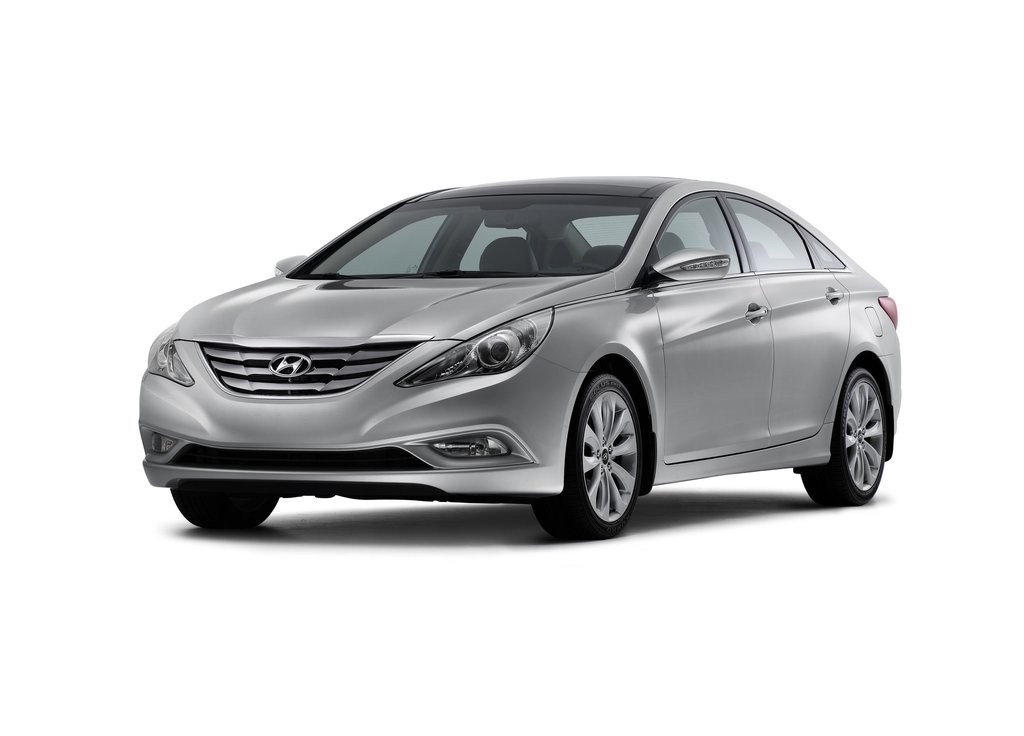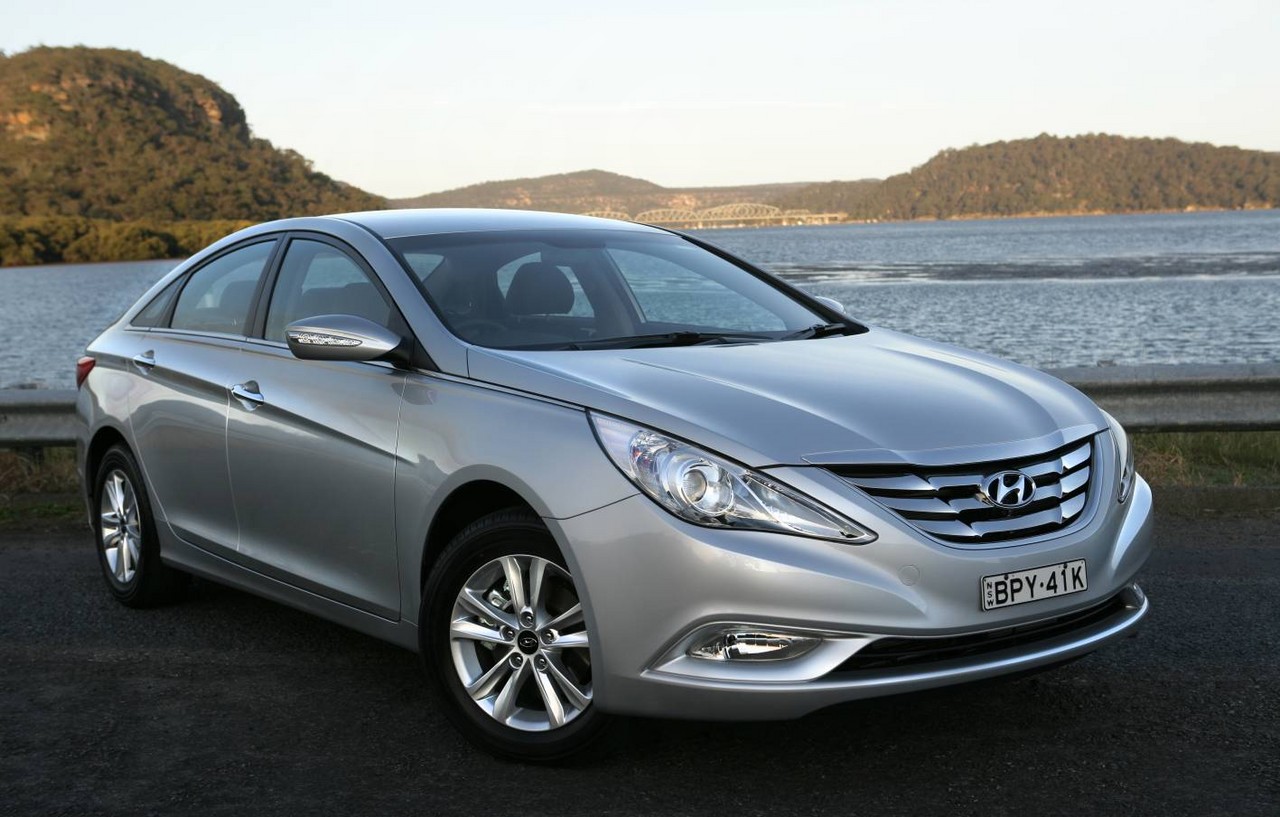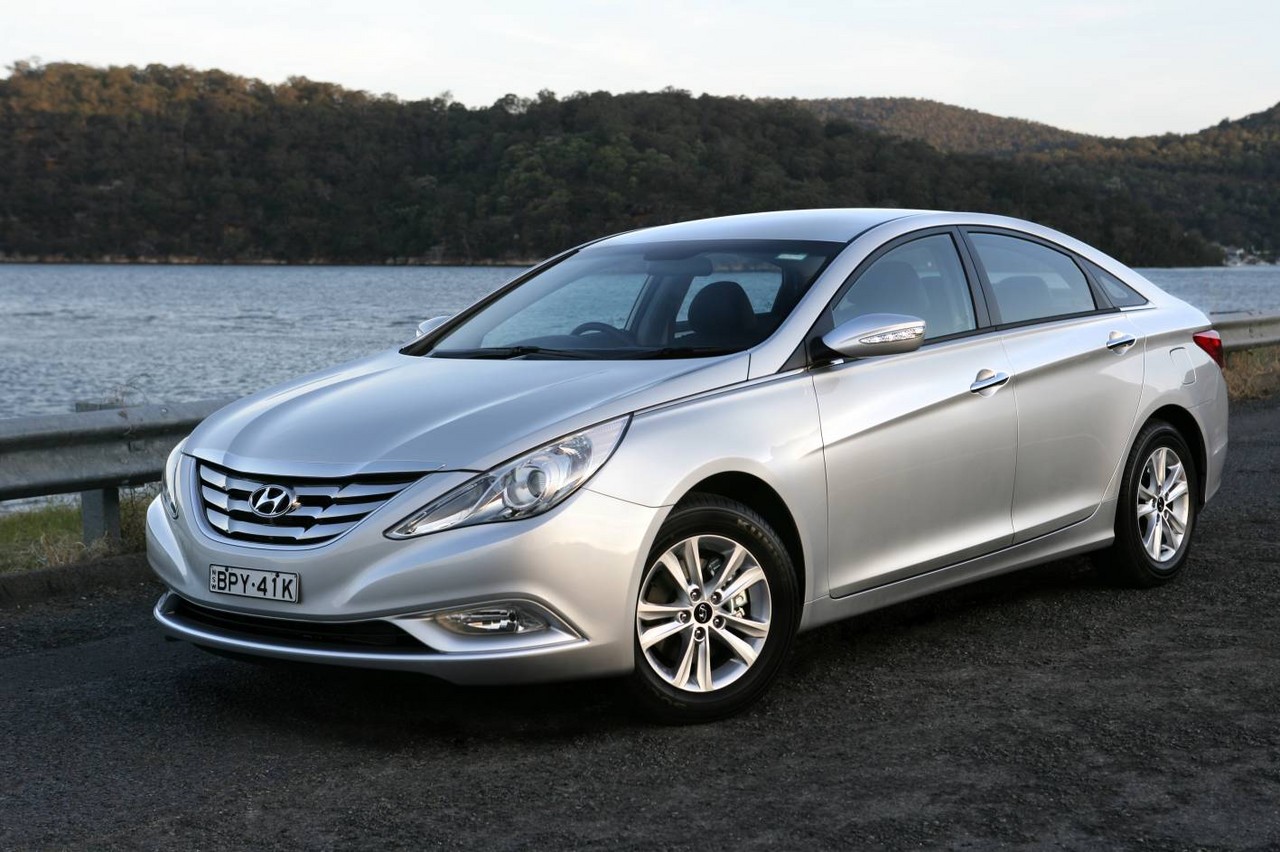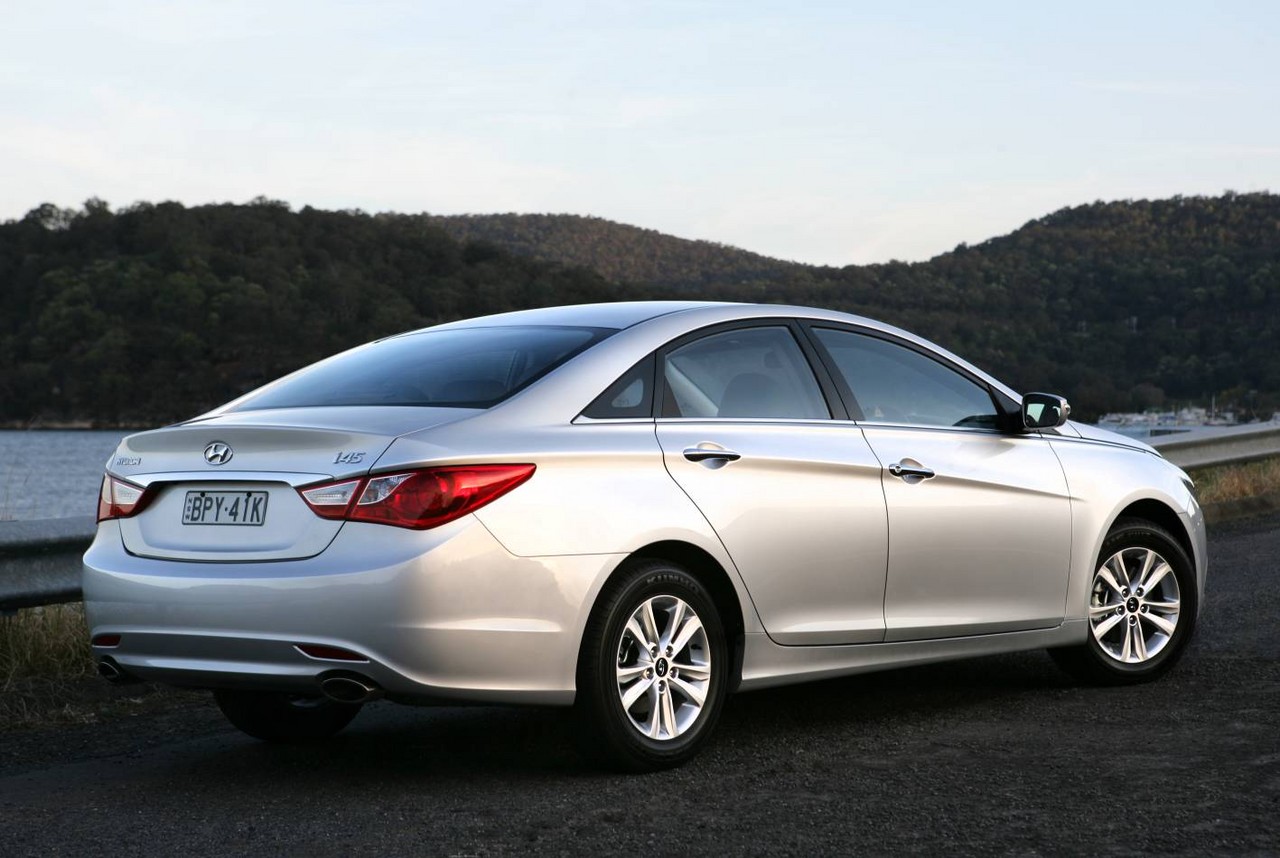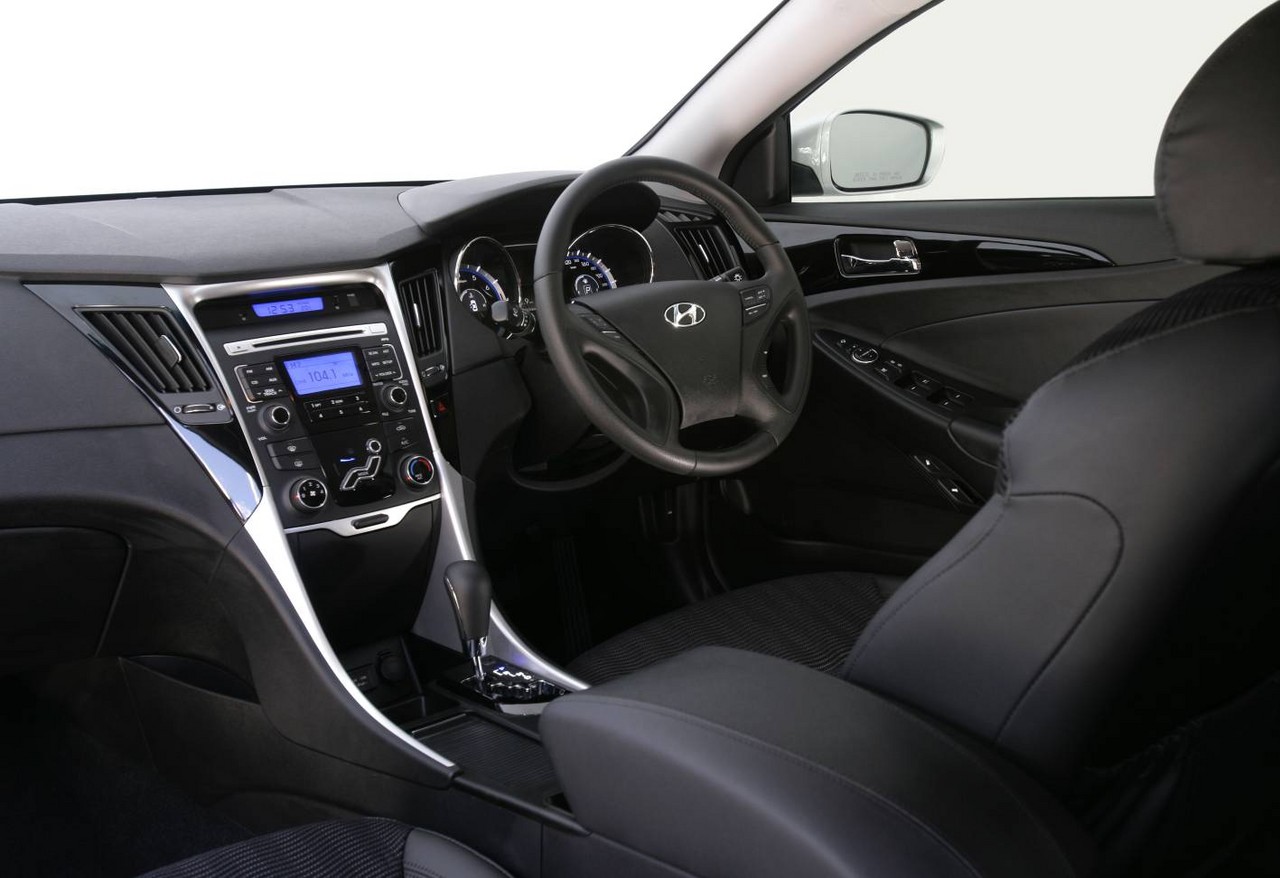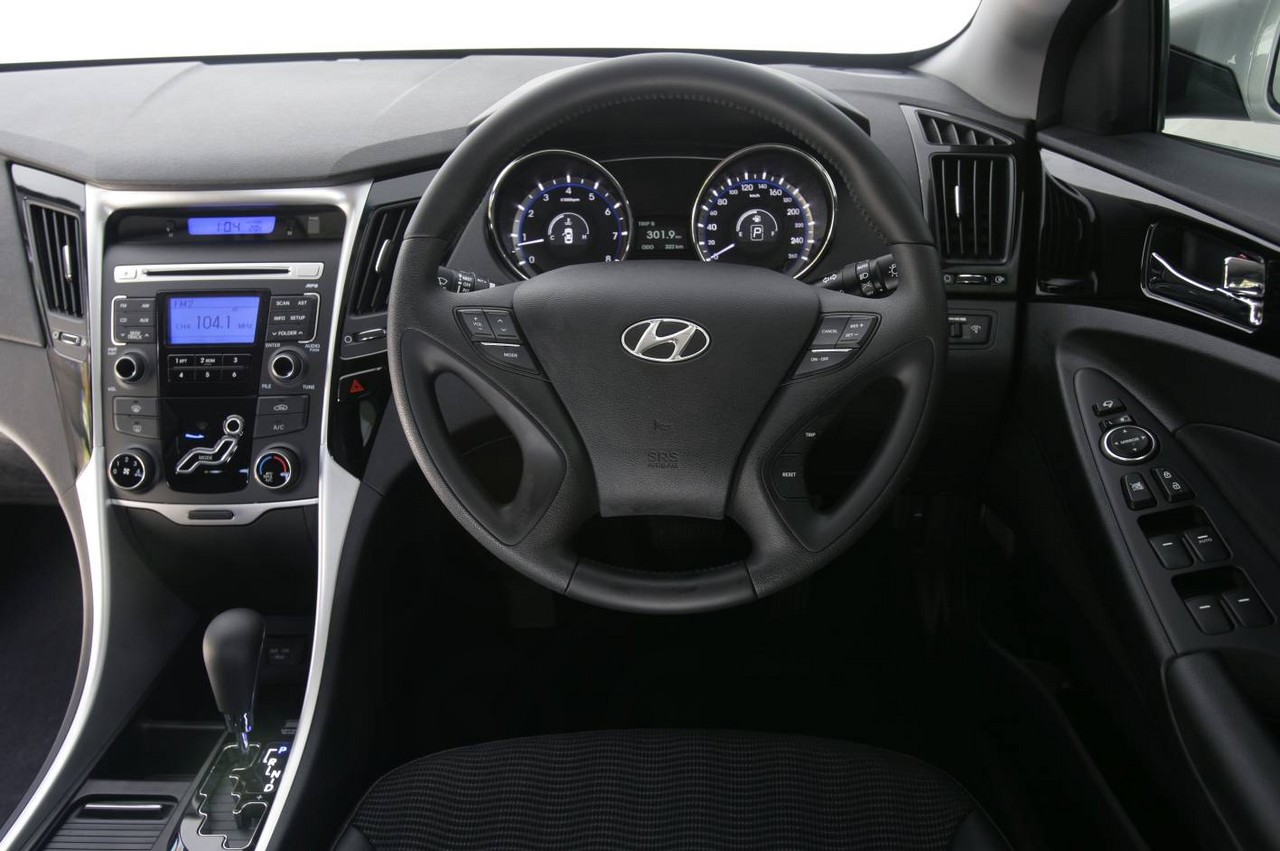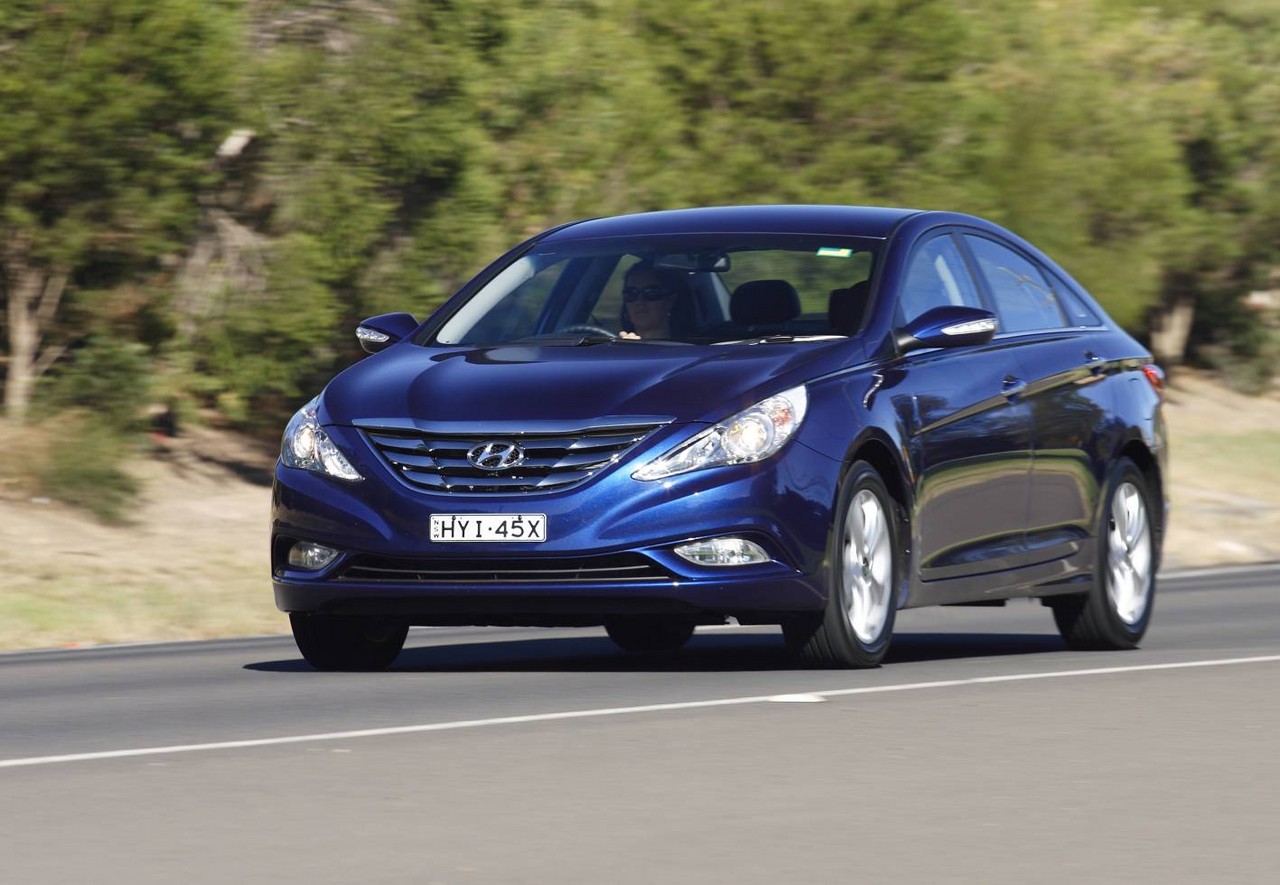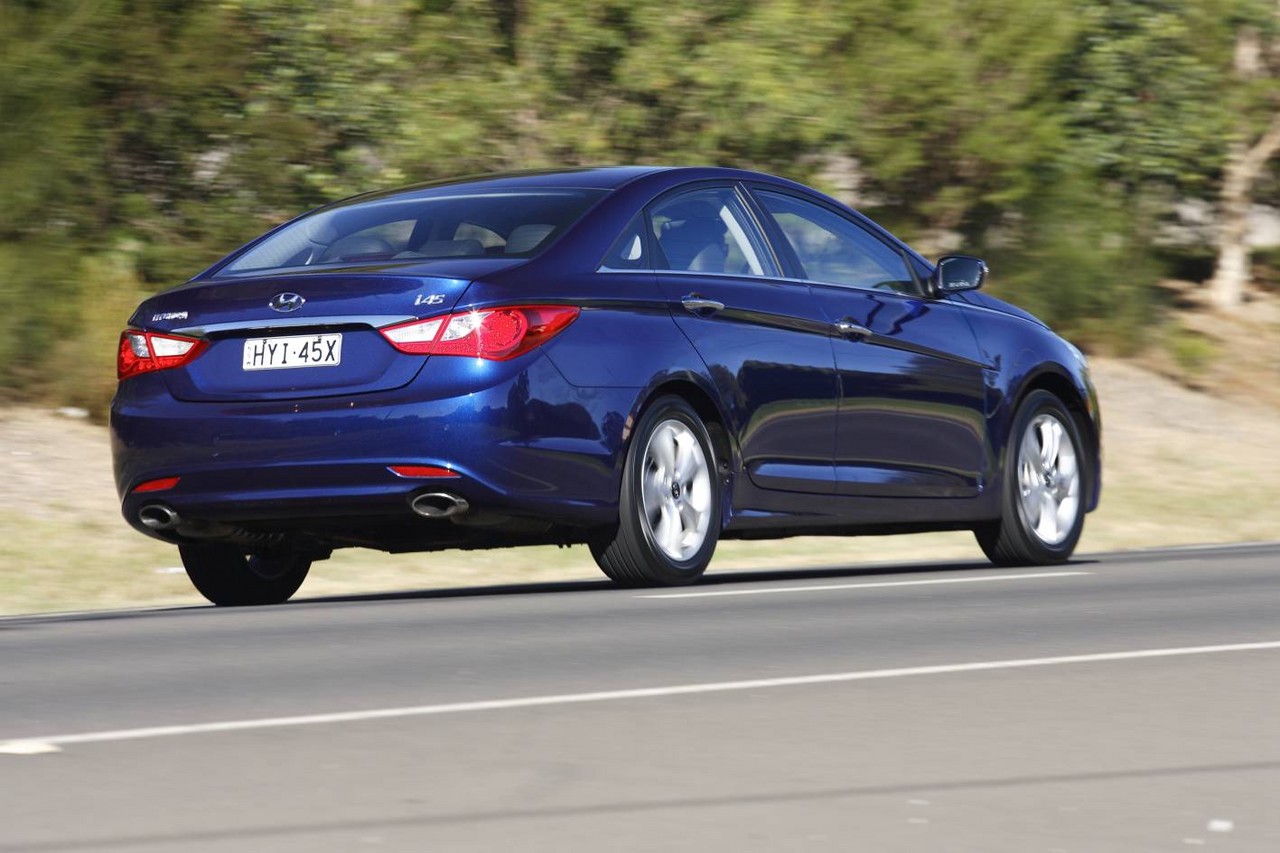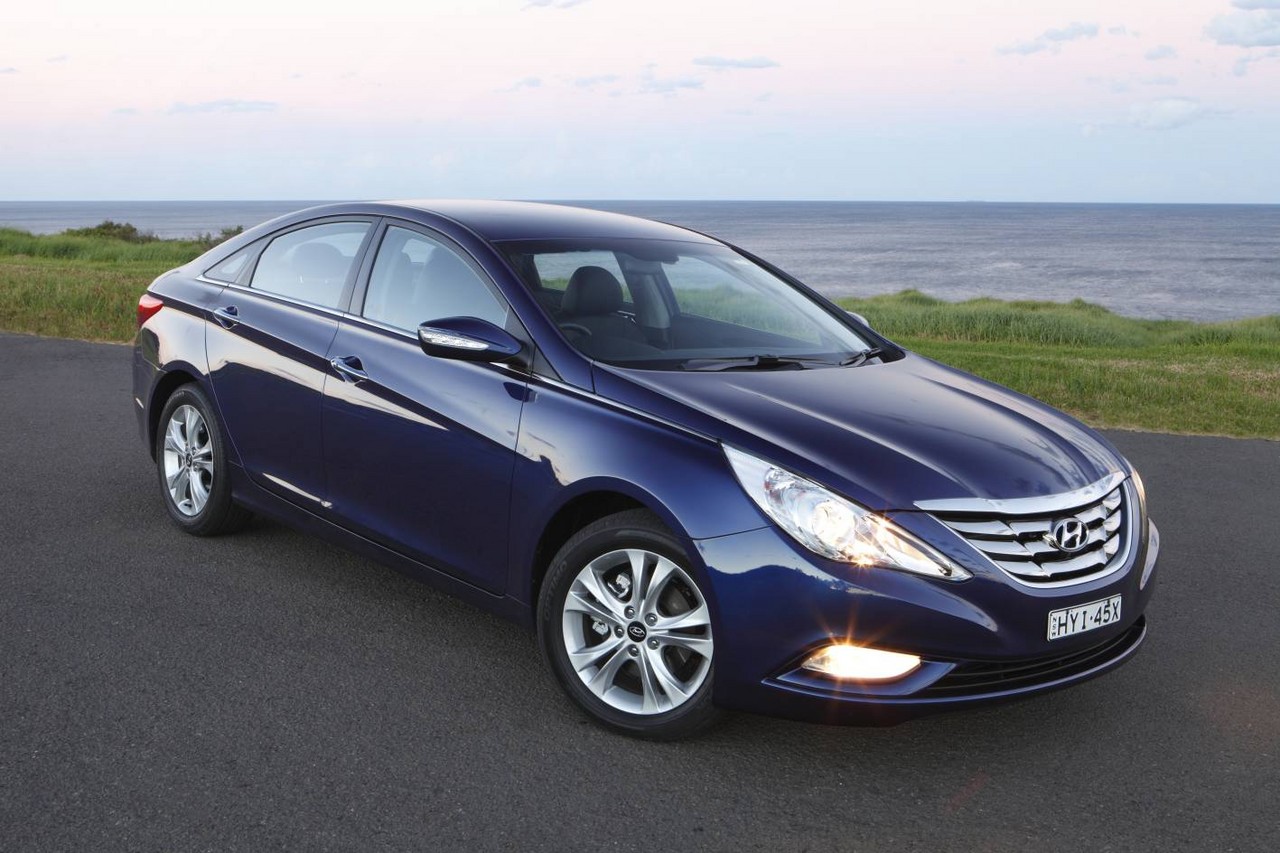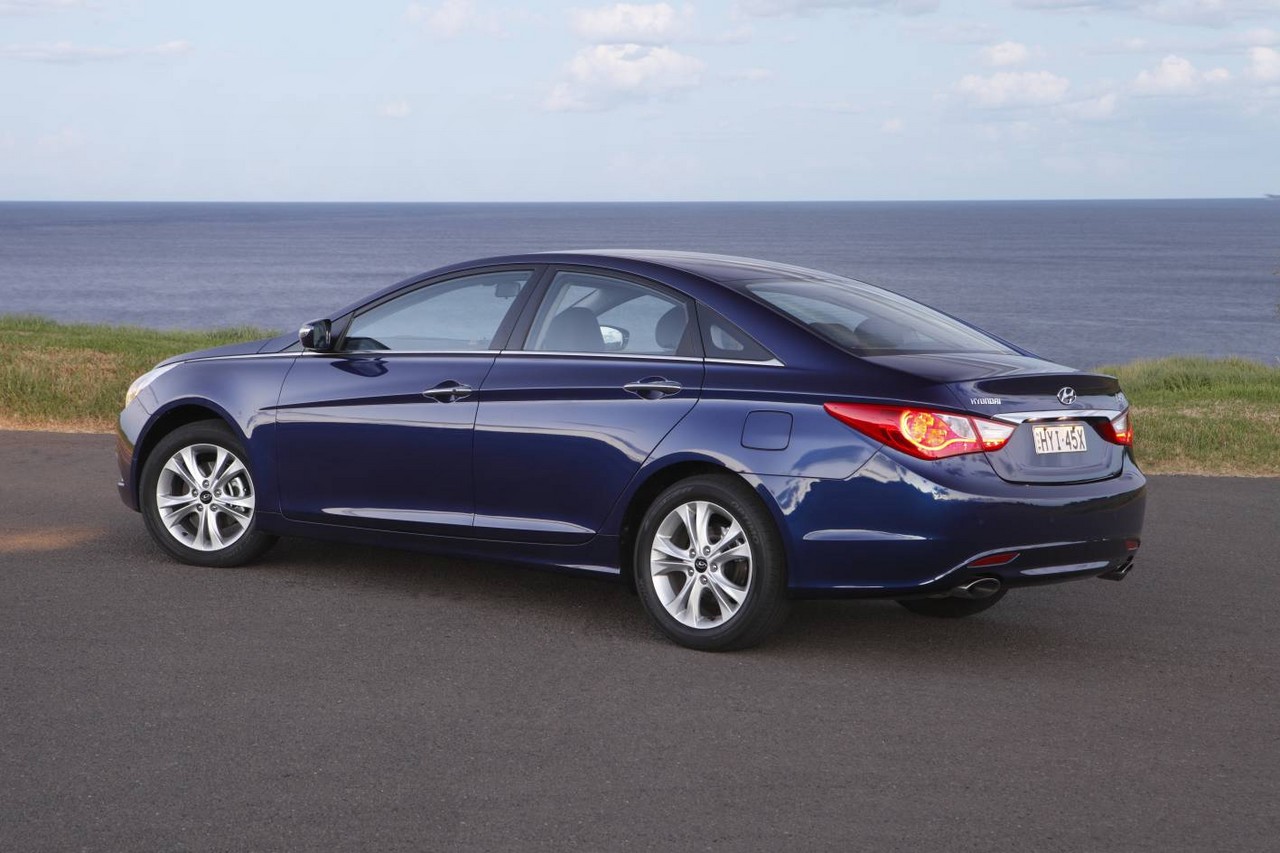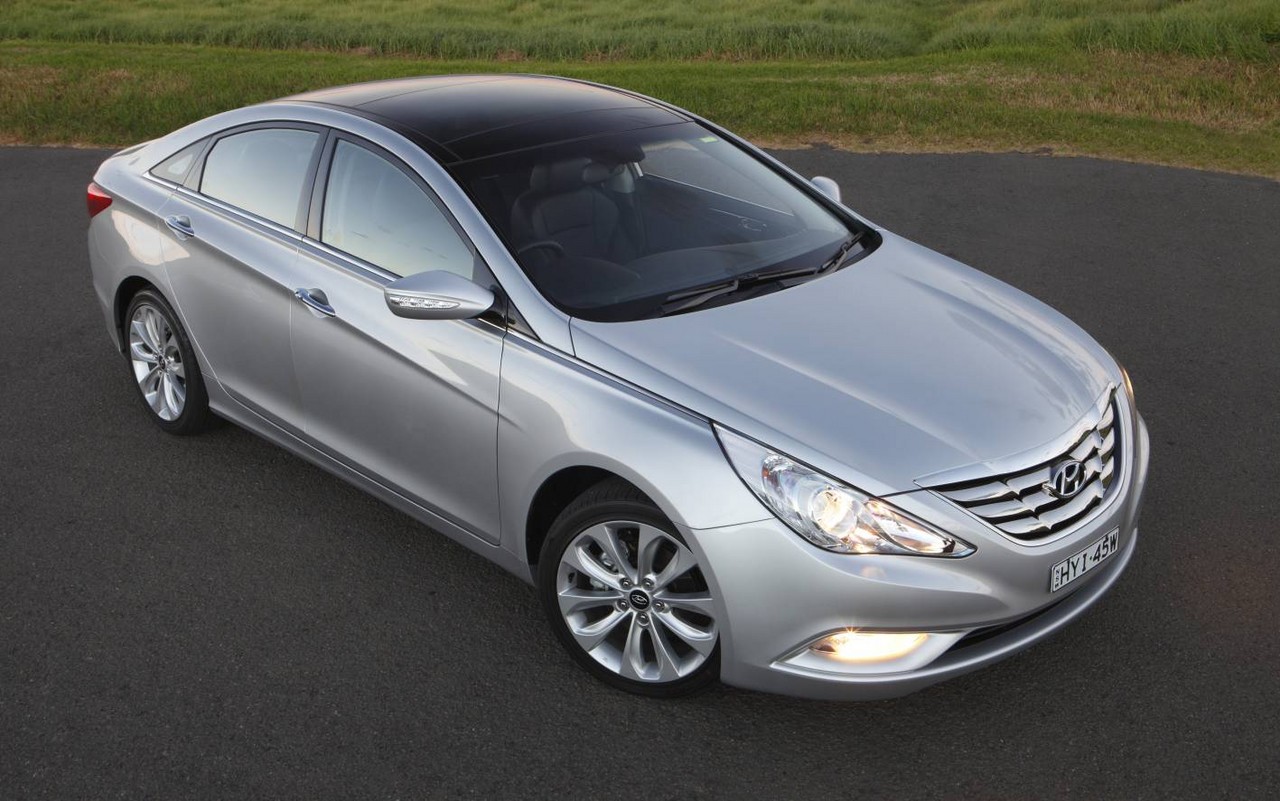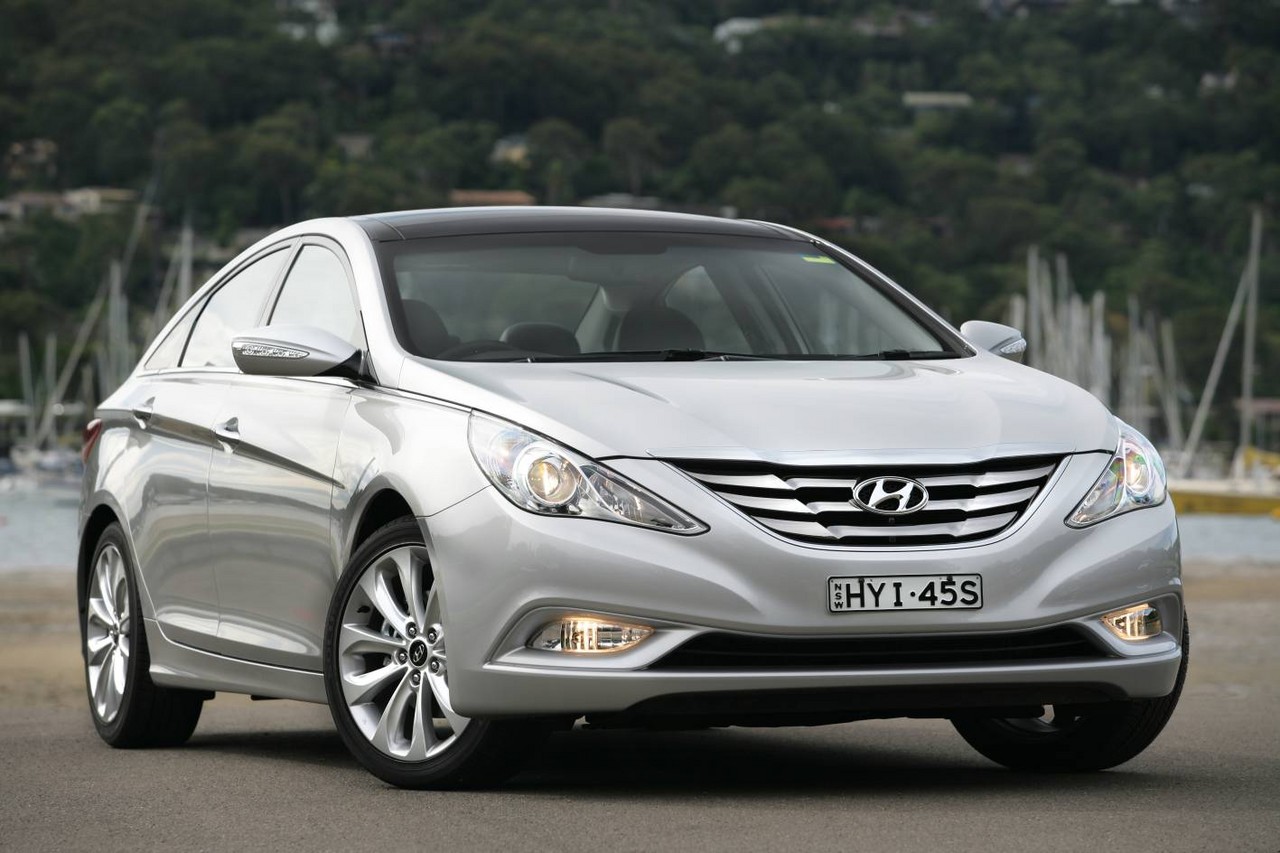
- Willing 2.4-litre petrol engine
- Spacious interior
- Lacks dynamics of Mazda GH Mazda6 , Honda CU2 Accord Euro and Suzuki Kizashi
- Suspension lacks compliance
- Underpowered 2.0-litre petrol engine
- Overly-assisted steering lacks precision
- Steering wheel kickback over bumps
Overview
Released in May 2010, the Hyundai YF i45 was a mid-size, front-wheel drive sedan. Manufactured in Asan, South Korea, the i45 was initially available with a 2.4-litre four-cylinder petrol engine (the 2.4 GDI variants) that was mated to either a six-speed manual or automatic transmission. In May 2011, however, the range was expanded with the introduction of 2.0-litre four-cylinder petrol engines (the 2.0 MPI variants); the manual transmission option for the 2.4 GDI was also withdrawn at this time.
Beyond the variants, the i45 was available in Active, Elite and Premium editions.
Nu and Theta II engines
Of the engines,
- The 2.0-litre ‘Nu’ petrol engine had an aluminium block and cylinder head, double overhead camshafts, four valves per cylinder, variable intake valve lift (‘CVVL’) and a compression ratio of 10.3:1; and,
- The 2.4-litre G4KJ ‘Theta II’ engines differed in that they had direct fuel injection, continuously variable intake valve timing (‘CVVT’), a variable induction system and a compression ratio of 11.3:1.
Dimensions and body
Compared to its NF Sonata predecessor, the YF i45 was 20 mm longer (at 4820 mm), 3 mm wider (1835 mm), 5 mm lower (1470 mm) and had a 65 mm longer wheelbase (2795 mm). Furthermore, the i45 had a coefficient of drag of 0.28, while the new chassis achieved a 25 per cent increase in torsional rigidity and a 19 per cent increase in bending rigidity.
Suspension
Like its predecessor, the YF i45 had MacPherson strut front suspension and independent, multi-link rear suspension.
| Variant | Edition | Engine | Trans. | Years | Peak power | Peak torque |
|---|---|---|---|---|---|---|
| 2.0 MPI | Active | 2.0-litre petrol I4 | 6sp man., 6sp auto |
2011-13 | 121 kW at 6200 rpm | 198 Nm at 4600 rpm |
| 2.4 GDI | Active | 2.4-litre petrol I4 | 6sp man. | 2010-11 | 148 kW at 6300 rpm | 250 Nm at 4250 rpm |
| Active, Elite, Premium |
2.4-litre petrol I4 | 6sp auto | 2011-13 |
Safety equipment
Standard safety equipment for the Hyundai i45 included dual front airbags, front side (thorax) airbags, full length curtain airbags (i.e. for front and rear occupants), ABS, electronic brake force distribution, brake assist, electronic stability control, traction control, active front seat head restraints, anti-submarining front seat base steel pans and rear seat ramps and front seatbelts with pretensioners and load limiters.
ANCAP crash testing
In ANCAP crash testing , the i45 received a five star adult occupant protection rating with a score of 33.53 out of 37. In the offset crash test, there was a slight risk of serious chest and leg injury for the driver and a slight risk of lower leg injury for the front passenger. In the side impact test, there was a slight risk of serious chest injury for the driver.
Features: i45 Active, Elite and Premium
Standard features for the i45 Active included 16-inch alloy wheels, a six speaker sound system with CD player, MP3/WMA compatibility and auxiliary inputs (3.5 mm/USB/iPod), air conditioning, a power adjustable driver’s seat, cruise control (for automatic models), front fog lights, automatic headlights, a leather-wrapped steering wheel with audio controls, 60/40 split and folding rear seats, remote central locking with keyless entry, power windows and mirrors, a tilt and reach adjustable steering wheel, a height adjustable driver’s seat, two 12 volt power outlets, a trip computer, an alarm and immobiliser.
Beyond this, the i45 Elite added 17-inch alloy wheels, climate control air conditioning, full leather upholstery, proximity key and push-button start, rear parking sensors, rain-sensing wipers and steering wheel gearshift paddles.
Finally, the i45 Premium was further equipped with 18-inch alloy wheels with sports suspension, a six-disc CD player, power adjustable front seats with memory settings, an electrochromatic rear-view mirror and a panoramic glass sunroof.
October 2010: i45 update
In October 2010, the i45 underwent a minor update with the Amplitude Selective Damping system – previously restricted to the Premium edition – extended to the Active and Elite editions; combined with stiffer springs and thicker anti-roll bars, the changes were intended to provide greater steering feel and feedback. The Premium edition was also fitted with satellite navigation, Bluetooth connectivity and heated front seats as standard.
Brochures
- Brochure: Hyundai YF i45 (May 2010)
- Brochure: Hyundai YF i45 (May 2011)
- Brochure: Hyundai YF i45 (December 2012)
Related links
- Press release: Hyundai YF i45 (May 2010)
- Press release: Hyundai YF i45 update (October 2010)
- Specifications: Hyundai YF i45 (October 2012)
- Wikipedia.org: Hyundai YF i45
